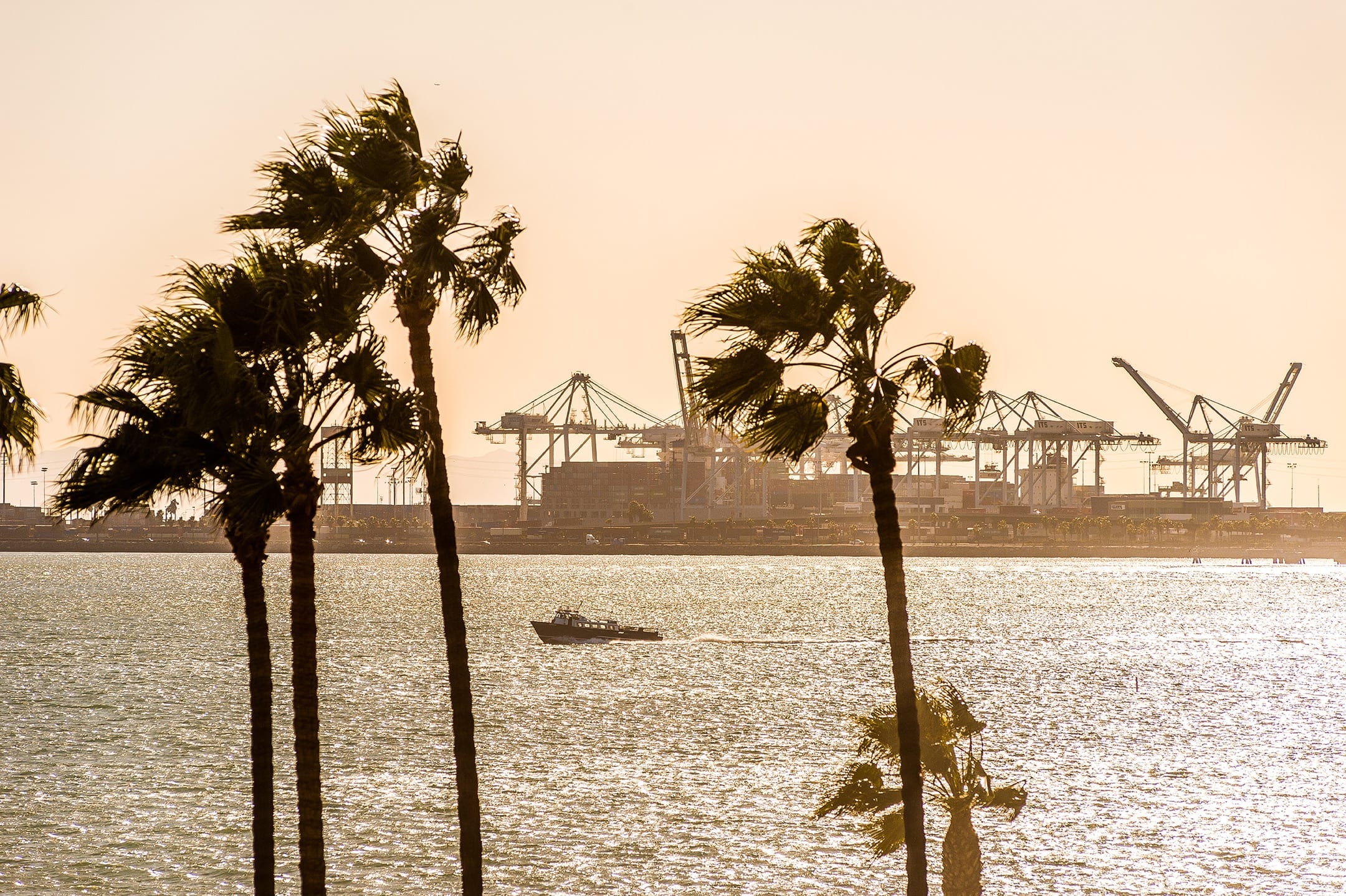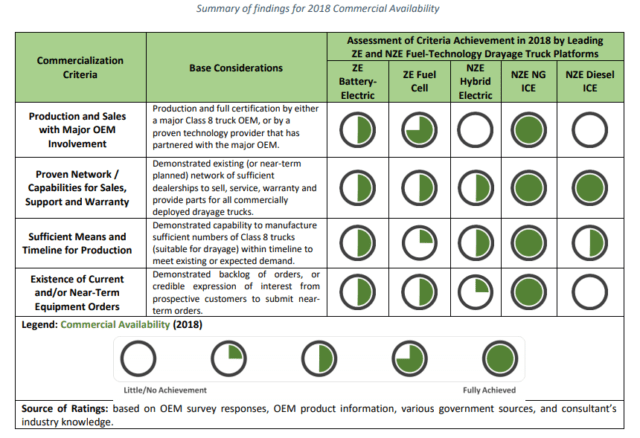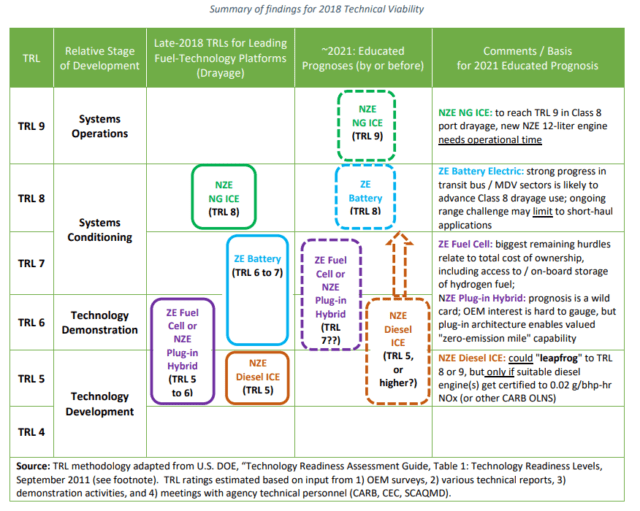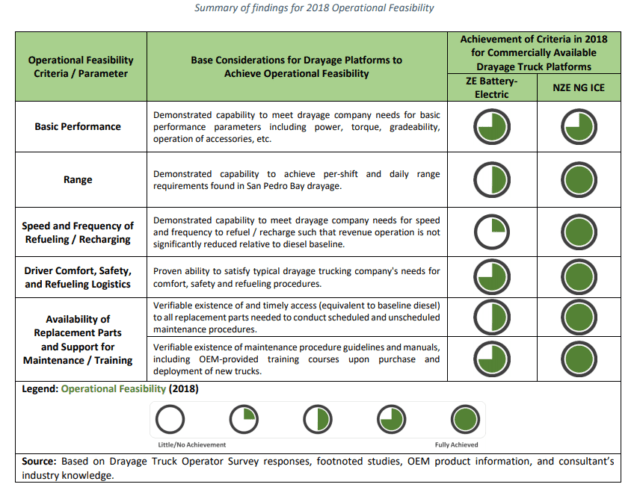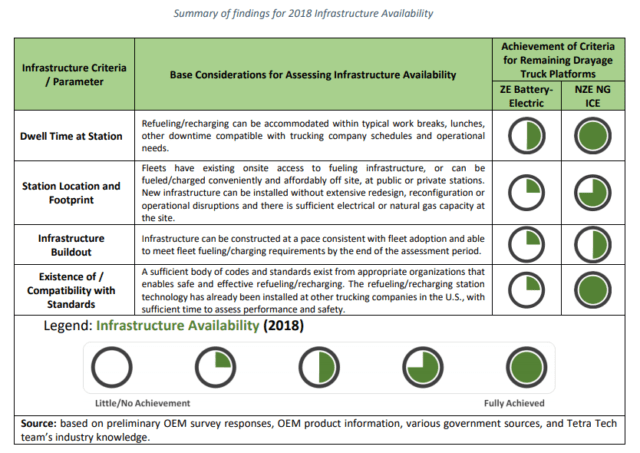The Ports of Los Angeles and Long Beach released a Drayage Truck Feasibility Assessment in April of 2019, which suggests that near-zero emission natural gas vehicles (NGVs) are a key component to achieve clean air at the ports. While some of the specific analyses are not completely agreeable, the larger conclusion is one that I hope the ports and relevant stakeholders act expeditiously on by deploying increasing numbers of NGVs in the San Pedro Bay drayage fleet to immediately take advantage of the much needed emission reductions.
Background on the San Pedro Bay Port Clean Air Action Plan
In 2017, the Ports of Los Angeles and Long Beach approved and released an update to their Clean Air Action Plan (CAAP). The CAAP is the San Pedro Bay Port Complex’s strategy to aggressively reduce emissions from cargo movement in and around the port complex.
The ports’ feasibility assessment suggests that near-zero emission NGVs are a key component to achieve clean air at the ports.
Since the adoption of the original CAAP in 2006, diesel particulate emissions from mobile sources has decreased by 87%. This is largely thanks to the groundbreaking Clean Trucks Program, which implemented a progressive ban on older heavily polluting diesel drayage trucks.
Conventional heavy-duty diesel-fueled trucks still dominate the San Pedro Bay Ports drayage fleet of 17,500 registered Class 8 trucks, approximately 11-13,000 of which are in active fleet operation due to seasonality. With numbers of this scale, there is still much work to be done to reduce emissions for surrounding communities and meet the goals set forth in the Ports’ CAAP.
The San Pedro Bay Port Complex, the busiest container port complex in the US, is an economic engine for the state of California as well as the nation. The Ports of LA and Long Beach must find a harmonious balance between environmental stewardship and economic competitiveness, while simultaneously maintaining a vibrant workforce and protecting the health of surrounding communities.
As outlined in the updated Clean Trucks Program, the ports have set an ambitious goal to transition all drayage trucks that enter the port complex to zero-emissions by 2035. The ports have conducted a study to evaluate the technological and commercial maturity of leading near-zero and zero emissions technologies including battery electric or direct-grid electric, hydrogen fuel cell electric, advanced natural gas, hybrid-electric, and advanced diesel internal combustion engines.
The assessment serves as a tool to guide conversations with port stakeholders, helping to communicate that NGVs are part of a comprehensive strategy to meet operational requirements and exceed emission reduction goals.
The feasibility assessment offers an examination of the market, the technologies available, the needed infrastructure, and the financial cost of reaching these goals. And, as we’ll see, there was one consistent theme across their findings—near-zero emission natural gas vehicles (NGVs) are a key component to reaching our goal of clean air at the ports as soon as possible.
This assessment also serves as a critical tool to inform and guide conversations with port stakeholders going forward, helping to communicate that NGVs are part of a comprehensive strategy to cost-effectively meet operational requirements and exceed emission reduction goals without compromise.
In their study, “feasibility” specifically refers to the ability of alternative fuel drayage trucks to provide similar, or better, overall performance and achievement compared to today’s baseline diesel drayage trucks, when broadly used for all types of drayage service.
The assessment compared technology across five key criteria including:
- Commercial Availability
- Technical Viability
- Operational Feasibility
- Availability of Infrastructure and Fuel
- Economic Workability
1. Commercial Availability
As an initial step, the feasibility assessment examined which technologies are sold by OEMs in commercially available Class 8 trucks suitable for drayage operations today—without tradeoffs. The assessment found that near-zero natural gas technology is the dominant commercially available Class 8 truck platform with all six major OEMs—including Daimler Freightliner, Kenworth, Mack, Navistar, Peterbilt, and Volvo—offering Class 8 near-zero trucks powered by the 12-liter Cummins Westport ISX12N natural gas engine.
Battery-electric technology is commercially offered in one Class 8 truck model by BYD that is effectively an “early commercial” launch. The assessment found the other three core fuel-technology platforms evaluated including fuel cell, hybrid electric, and near-zero diesel did not meet the basic criteria to be deemed commercially available.
2. Technical Viability
Technical viability is the second parameter that was used to screen the five core fuel-technology platforms for overall feasibility. The assessment classified today’s 12-litre near-zero emission natural gas trucks with a Technical Readiness Level (TRL) eight on a scale of four through nine and suggests that NGVs will reach a TRL9 by 2021.
However, stakeholders across the industry widely agree that these trucks are in fact fully proven in most drayage applications and ready to be deployed today (not in 2021) for immediate cost-effective emission reductions. There is some work still needed to evaluate the technology for very specific duty cycles, such as overweight corridor loads and 80,000 pound loads over the grapevine.
Regardless, no other near-zero or zero emission fuel-technology platform—including advanced diesel internal combustion engines (ICE) technology, which has yet to demonstrate near-zero emission status—currently achieves a similar technical readiness level.
3. Operational Feasibility
Operational feasibility assessed whether the vehicle technology-fuel platforms met a number criteria, including, the basic performance (e.g., power, torque, gradeability, etc.), range (i.e., per shift and daily range requirements), refueling considerations, driver comfort, safety, availability of replacement parts, and support for maintenance / training.
The technical assessment found that near-zero emission natural gas trucks are the overall closest direct replacement for diesel trucks in terms of operational feasibility. The assessment also pointed out that maintenance support for natural gas trucks is only expected to scale with increased deployments of NGVs through the existing network of natural gas truck and engine dealerships.
4. Availability of Infrastructure and Fuel
The feasibility assessment also looked at the availability of infrastructure, which factored in dwell time at a fueling station, locations of fueling stations, ability to buildout new infrastructure, and existence of codes or standards to ensure safe and effective refueling. It is no surprise that the availability of infrastructure is one of the most significant near-term barriers to wide-scale adoption of advanced technologies across the board.
Zero emission battery-electric truck charging infrastructure is an especially complex and rapidly changing landscape. The feasibility assessment concludes that, while substantial progress has been made, it appears highly unlikely—if not impossible—to develop the EV charging infrastructure needed to support large numbers of battery-electric trucks at the San Pedro Port Complex by 2021.
5. Economic Workability
The assessment also factors in which technologies have a similar, or better, total cost of ownership compared to traditional diesel trucks. An indisputably critical factor for end users and decision makers.
While near-zero emission natural gas trucks have higher upfront capital costs compared to their diesel counterpart, there is affordable and widely-available fuel, and attractive incentive options, creating an overall cost of ownership comparable to diesel trucks.
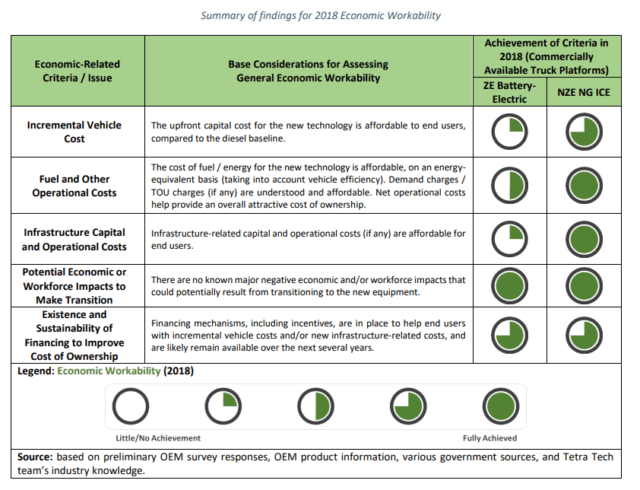
Source: http://www.cleanairactionplan.org/documents/final-drayage-truck-feasibility-assessment.pdf/
Overall Feasibility of NGVs and BEVs
Based on the five parameters reviewed as part of the San Pedro Bay Port’s clean truck feasibility assessment, it is clear that near-zero emission NGVs are a key component to achieve clean air at the ports—starting today and without compromise.
As traffic at our ports continue to grow, San Pedro Bay Port officials must continue to aggressively pursue emissions reductions with a holistic strategy. And with heavy-duty diesel-fueled trucks still dominating the San Pedro Bay Ports’ drayage fleet, there is much work to be done.

